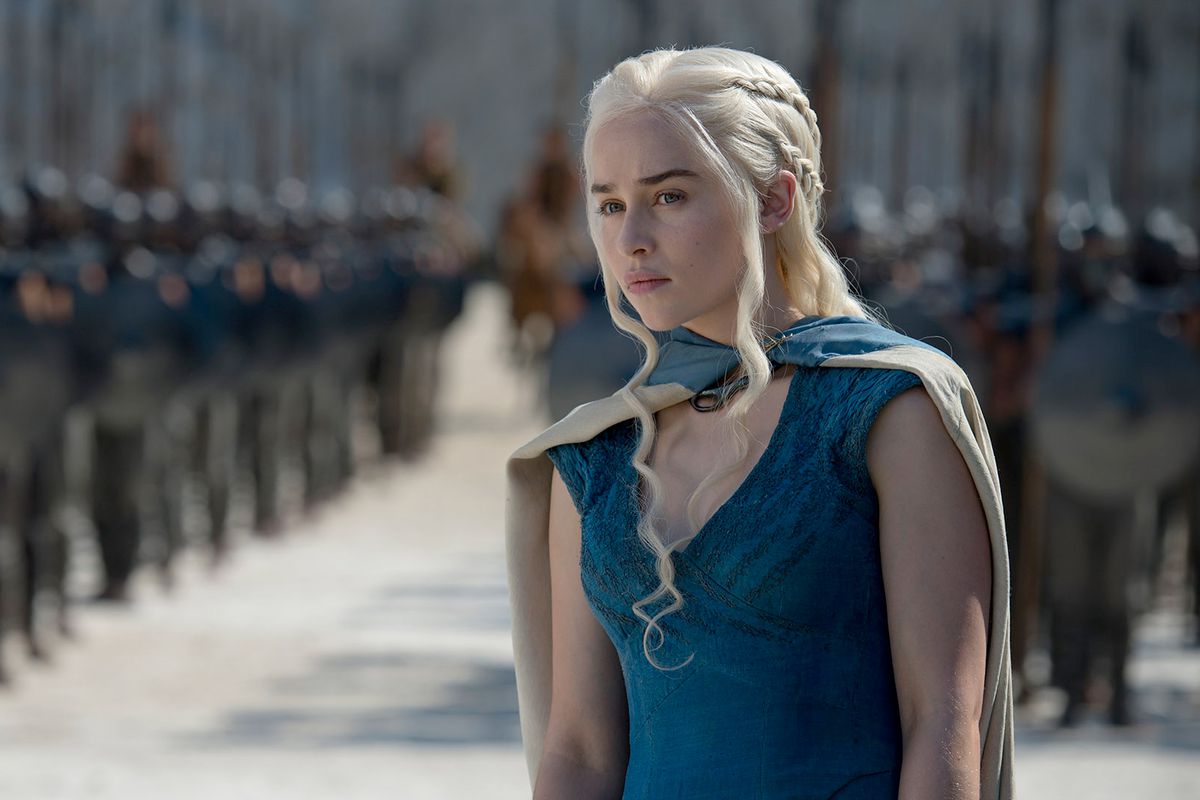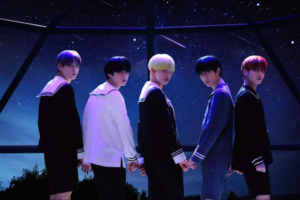Game of Thrones S4 E3 Breaker of Chains: Unpacking the Key Themes
Game of Thrones S4 E3 Breaker of Chains: Game of Thrones never shies away from diving deep into complex themes and character dynamics, and Season 4, Episode 3, “Breaker of Chains,” is no exception. This episode is pivotal in the series, not only because it follows the shocking events of the Purple Wedding but also because it explores the consequences of power, freedom, and survival in the brutal world of Westeros. In this blog, we’ll unpack the key themes of “Breaker of Chains,” examine the critical character interactions, and delve into the subplots that make this episode unforgettable.
Breaker of Chains: A Title Laden with Meaning
The title “Breaker of Chains” directly refers to Daenerys Targaryen, who has become a symbol of liberation and justice across the lands she conquers. However, the episode’s title also metaphorically applies to several characters as they struggle with the chains of their past, their duties, and their desires.
Daenerys Breaker of Chains Speech: A Rallying Cry for Freedom
One of the most iconic moments in Game of Thrones Season 4 Episode 3 is Daenerys’ speech at the gates of Meereen. Standing before a city built on the backs of slaves, she delivers a rousing address, offering freedom to the oppressed. Her “Breaker of Chains” speech is both a declaration of war against the city’s rulers and a promise of liberation to its slaves.
Daenerys’ actions in this episode are a culmination of her journey from a pawn in her brother’s quest for power to a powerful leader in her own right. She understands that to be a successful ruler, she must be both feared and loved, and she uses the narrative of liberation to solidify her position as a savior to the downtrodden. This scene not only reinforces Daenerys’ character but also sets the stage for the moral and ethical dilemmas she will face as she continues her conquest of Essos.
Tywin Lannister and Tommen: Shaping a New King
While Daenerys is breaking chains in Meereen, Tywin Lannister is busy molding Tommen into the kind of king he wants to see on the Iron Throne. With Joffrey barely cold in his grave, Tywin wastes no time in guiding Tommen on the responsibilities of kingship. He emphasizes wisdom, a trait he believes Joffrey lacked, and begins to shape Tommen into a ruler who will listen to his counsel.
This interaction between Tywin Lannister and Tommen highlights Tywin’s relentless pursuit of power and control, even at the expense of his family’s emotional well-being. For Tywin, ruling is a calculated game, and Tommen is simply a piece on his chessboard. This theme of power and manipulation is a constant in Tywin’s character and is crucial to understanding the political landscape of Westeros.
Character Dynamics and Controversies: The Complex Web of Relationships
“Breaker of Chains” is an episode rich in character development, particularly in the relationships between key figures like Arya and the Hound, Jaime and Cersei, and others. These dynamics are often fraught with tension, revealing the complex and often morally ambiguous nature of the characters.
Arya and the Hound: A Lesson in Brutality
The evolving relationship between Arya and the Hound continues to be one of the most compelling storylines in Game of Thrones. In this episode, their journey takes them to a farmer’s house, where Arya witnesses firsthand the brutal reality of the world she inhabits. When the Hound robs the farmer who offered them shelter, Arya is outraged, calling him “the worst shit in the Seven Kingdoms.” However, the Hound’s response is chillingly pragmatic: “How many Starks do they got to behead before you figure it out?”
This moment is a stark (pun intended) reminder of the harsh lessons Arya is learning from the Hound. While she retains a sense of morality, she is slowly being shaped by the unforgiving world around her. The Arya and the Hound dynamic is a study in survival, with Arya constantly grappling with the need to adapt without losing herself completely.
Jaime and Cersei Controversy: A Scene That Divides
One of the most controversial moments in Game of Thrones Season 4 Episode 3 is the scene between Jaime and Cersei in the Great Sept of Baelor. This scene, which occurs beside the corpse of their dead son Joffrey, sparked significant debate among fans and critics. The scene is jarring and difficult to watch, as it blurs the lines between consensual and non-consensual interaction, raising questions about the portrayal of their relationship.
The Jaime and Cersei controversy is indicative of the show’s willingness to push boundaries and explore the darker aspects of human relationships. It also serves to further complicate Jaime’s character, who is already struggling with his identity and his place within his family and the Kingsguard. This scene, while deeply unsettling, is crucial to understanding the complex and often toxic bond between the Lannister siblings.
Subplots and Supporting Characters: The Broader Picture
Beyond the central characters, “Breaker of Chains” also delves into the subplots that enrich the narrative of Game of Thrones. The episode touches on the challenges faced by characters like Stannis and Davos, Sam and Gilly, and Oberyn Martell, each of whom adds depth to the story.
Stannis and Davos: A Struggle for Power
Stannis and Davos continue their struggle to gain support for Stannis’ claim to the Iron Throne. In this episode, Stannis is confronted with the news of Joffrey’s death, which he believes may be the result of Melisandre’s magic. However, his lack of resources and support leaves him frustrated and uncertain about his future.
Davos, ever the loyal advisor, suggests reaching out to the Iron Bank of Braavos, an institution with the power to fund their cause. This subplot highlights the importance of financial and political backing in the fight for the throne, and it underscores the challenges Stannis faces in his quest for power.
Sam and Gilly: A Storyline of Survival
Meanwhile, Sam and Gilly struggle with the realities of life at Castle Black. Fearing for Gilly’s safety among the men of the Night’s Watch, Sam decides to move her to the nearby town of Molestown. This decision, while well-intentioned, places Gilly in a vulnerable position, and it reflects Sam’s ongoing struggle to protect the people he cares about.
The Sam and Gilly storyline serves as a reminder of the personal sacrifices made by those caught up in the larger conflicts of Westeros. It’s a subplot that adds a layer of humanity to the series, showing that even in a world dominated by power struggles, the bonds of love and loyalty still hold significant weight.
Oberyn Martell Hedonism: A Glimpse into Dorne
Oberyn Martell, the fiery and passionate Prince of Dorne, continues to make his presence felt in King’s Landing. In “Breaker of Chains,” we see Oberyn indulging in his pleasures, showcasing his hedonistic lifestyle. However, his scenes are more than just displays of excess; they offer insights into his character and his deep-seated hatred for the Lannisters.
Oberyn’s hedonism is a stark contrast to the rigid and calculated behavior of the Lannisters, and it serves to highlight the cultural differences between Dorne and the rest of Westeros. His presence in King’s Landing is a reminder that the Lannisters have many enemies, and that their hold on power is far from secure.
Conflicts and Consequences: The Wildling Raid
One of the episode’s most intense sequences is the Wildling raid on a village in the North. This raid serves as a brutal reminder of the dangers that lie beyond the Wall and the relentless threat posed by the Wildlings. The scene is a harrowing depiction of the violence and chaos that accompany the Wildlings’ campaign against the Night’s Watch.
The Wildling raid also sets the stage for future conflicts, as the Night’s Watch must prepare to defend the Wall against an increasingly desperate and dangerous enemy. It’s a subplot that adds tension and urgency to the series, reminding viewers that the true threat to Westeros may not come from within, but from the forces that lie beyond the Wall.
The Enduring Impact of Breaker of Chains
Game of Thrones Season 4 Episode 3, “Breaker of Chains,” is a masterful exploration of power, freedom, and survival in the world of Westeros. From Daenerys’ rousing speech in Meereen to the controversial moments between Jaime and Cersei, this episode is packed with memorable scenes and complex character dynamics.
As we’ve explored in this blog, the themes of Breaker of Chains resonate throughout the series, highlighting the struggles of characters as they navigate a world where the chains of power, duty, and desire are constantly in conflict. Whether it’s the Daenerys Breaker of Chains speech, the evolving relationship between Arya and the Hound, or the strategic maneuvers of Stannis and Davos, each element of this episode adds depth and richness to the story.
For more insights into the world of Game of Thrones and the lessons it offers, explore the resources available at Regent Studies.




